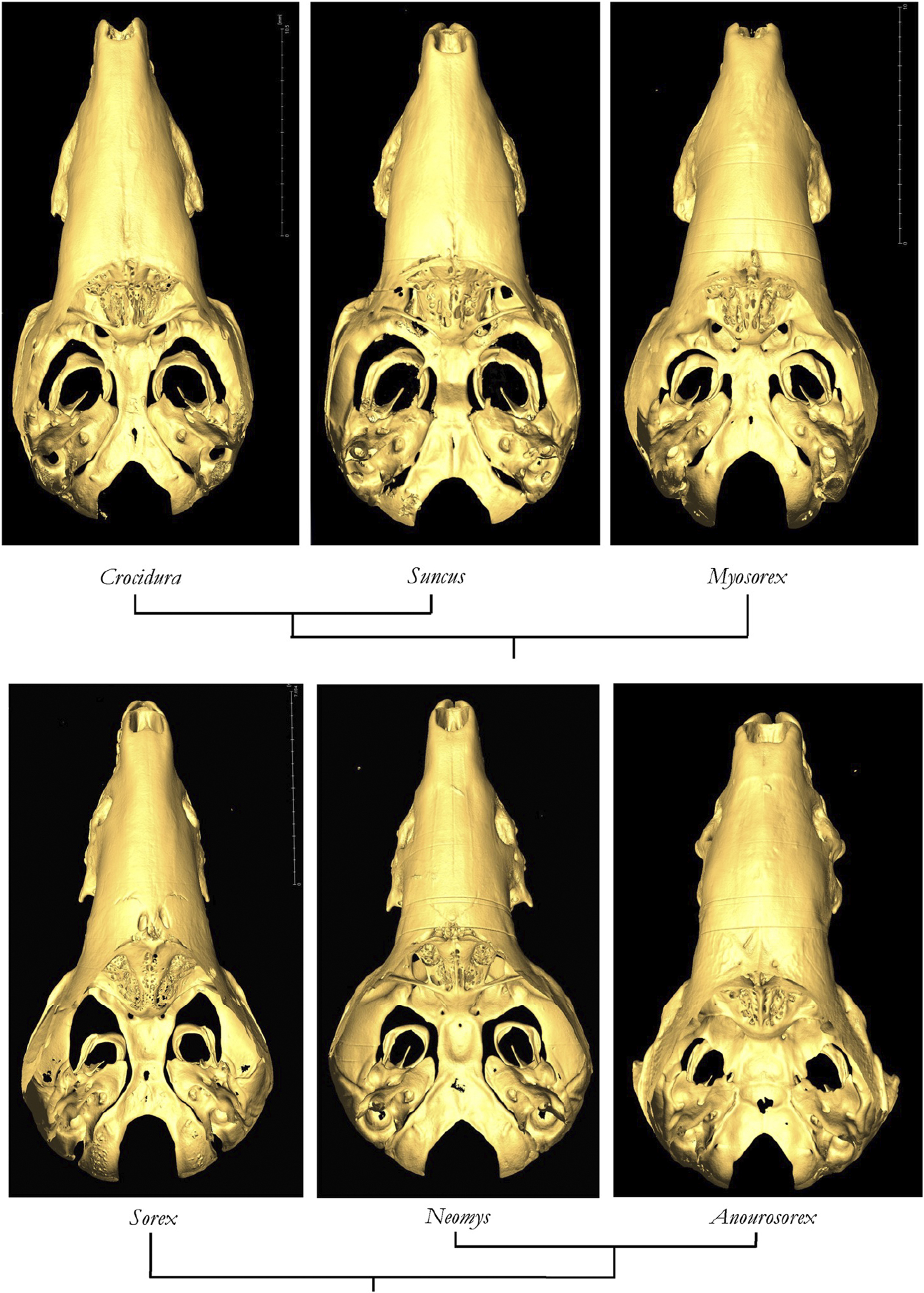
|
||
|
Inner cranial base in some soricid taxa whose phylogenetic-systematic position is shown in Fig. 19. All skulls are brought to about the same size. A Crocidurinae (Myosorex varius SMF 55060, Suncus etruscus SMF 26937, Crocidura russula SMF 95044). In Myosorex varius the alisphenoid is almost completely exposed dorsally, and consequently the foramen lacerum medium is relatively small. In Suncus etruscus and Crocidura russula, the position of the alisphenoid and the size of the foramen lacerum medium are intermediate. The large Suncus murinus is quite different. B Soricinae (Anourosorex squamipes SMF 48925, Neomys fodiens SMF 68229, Sorex araneus SMF 82598). Anourosorex squamipes has a very broad alisphenoid and a very small foramen lacerum medium, Neomys fodiens is intermediate, and in Sorex araneus the alisphenoid almost disappears underneath the orbitosphenoid and the foramen consequently reaches far forward. |